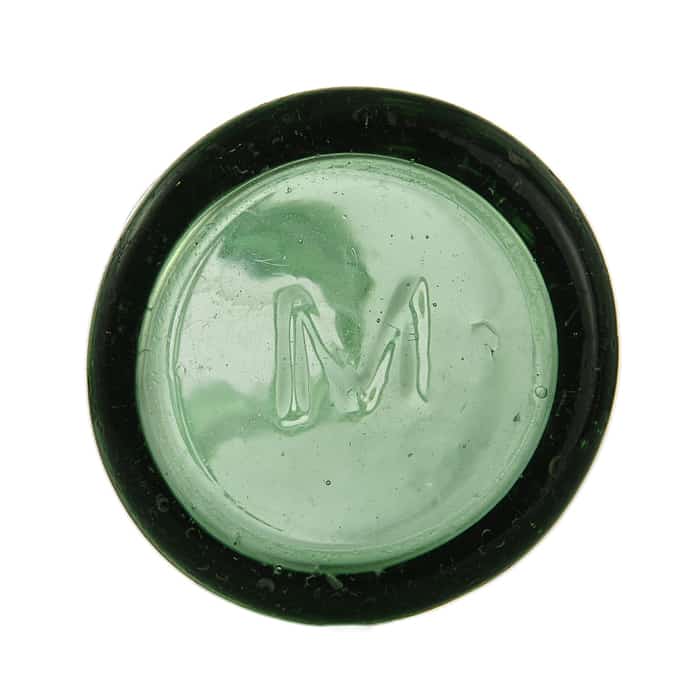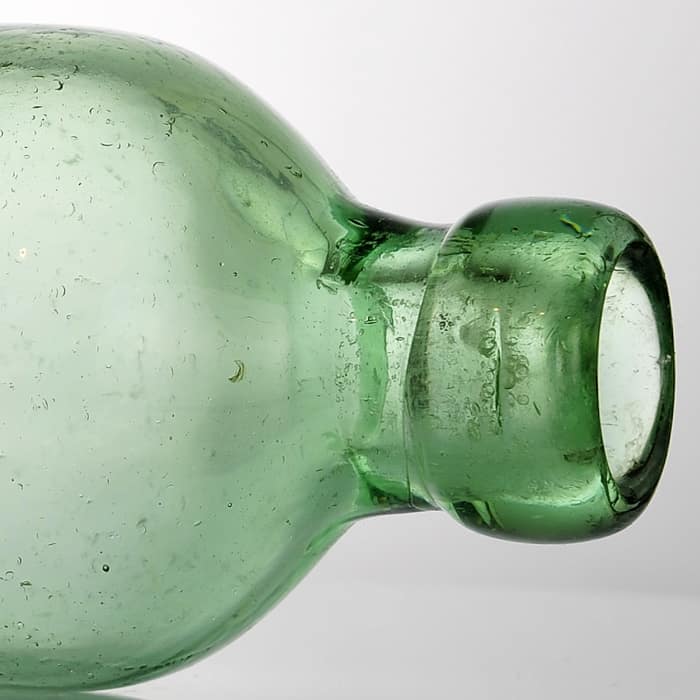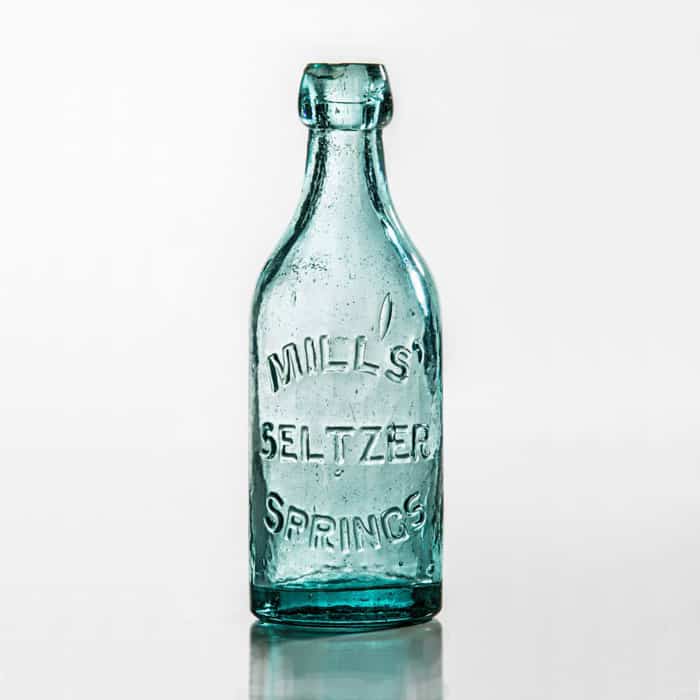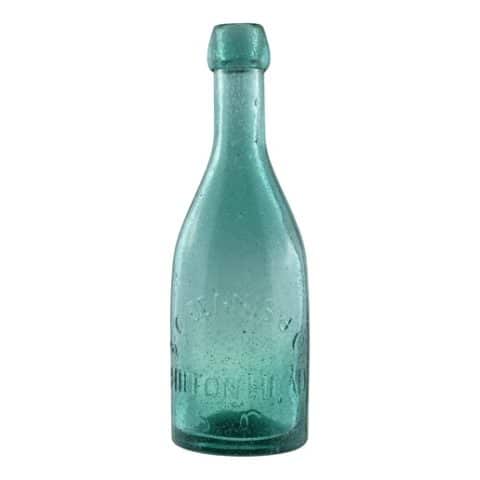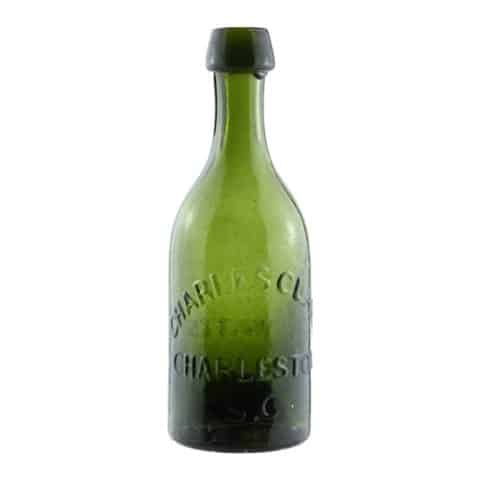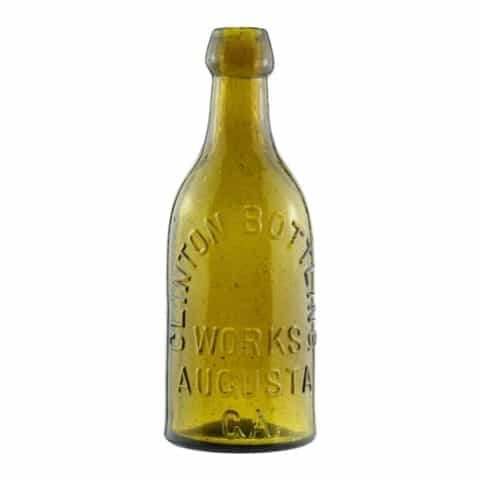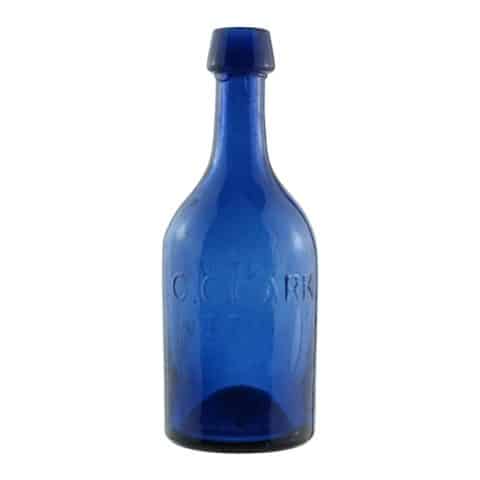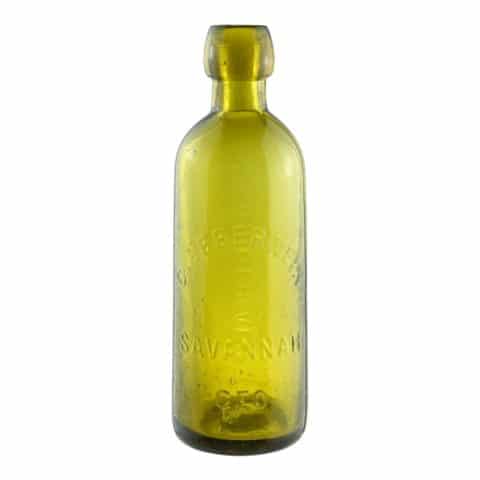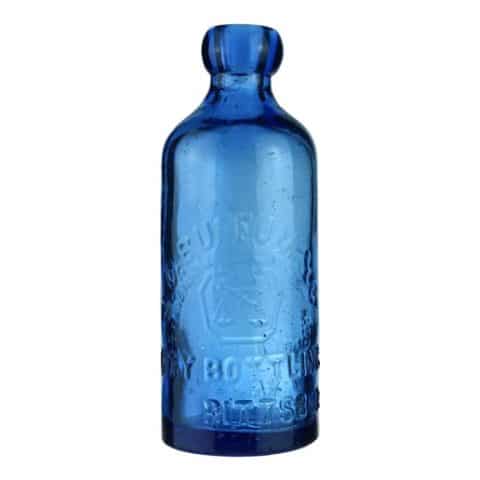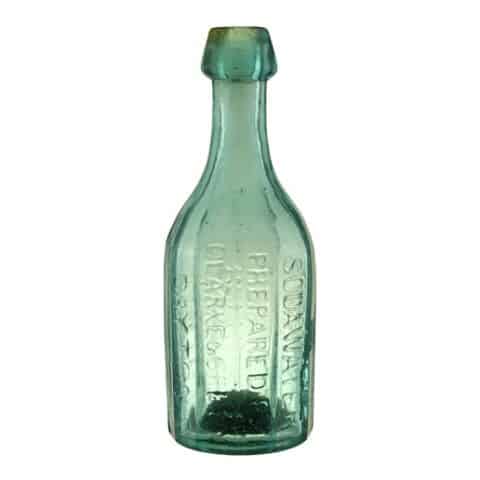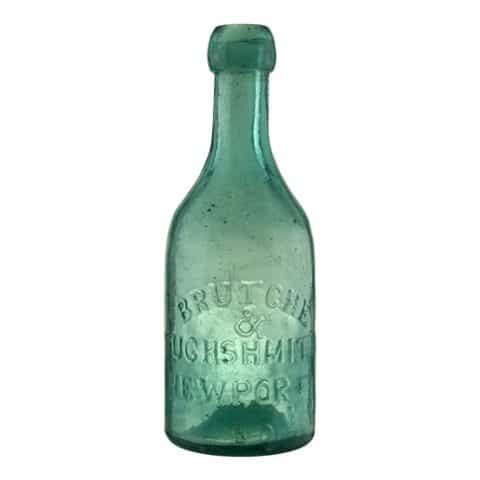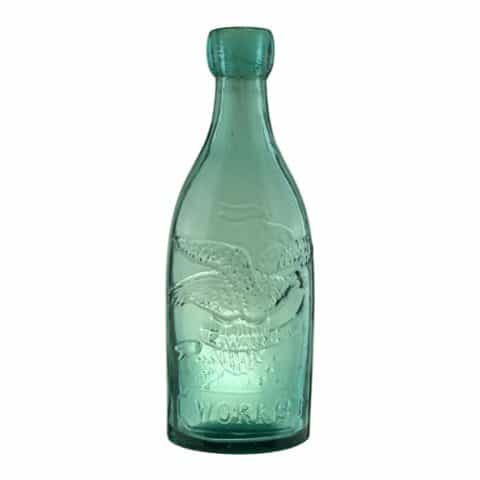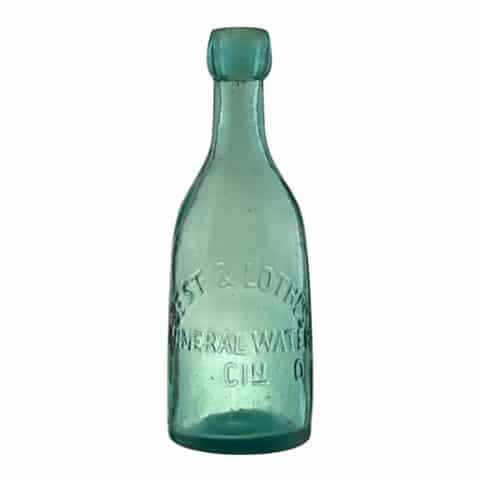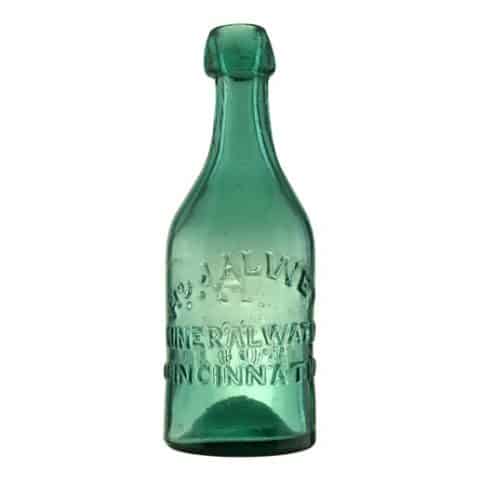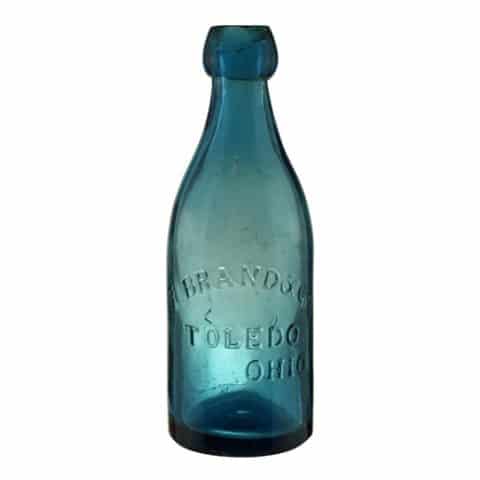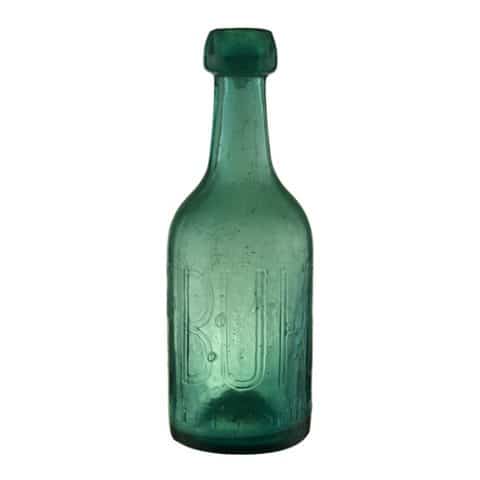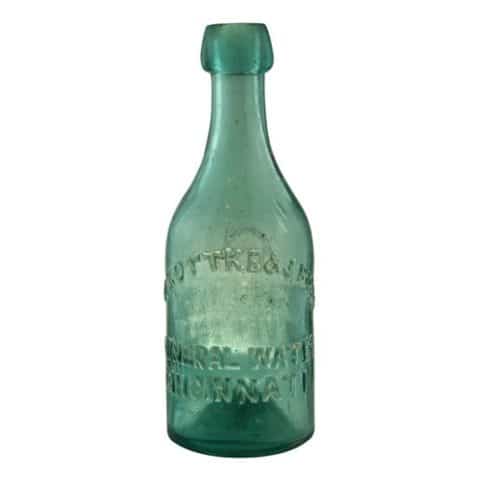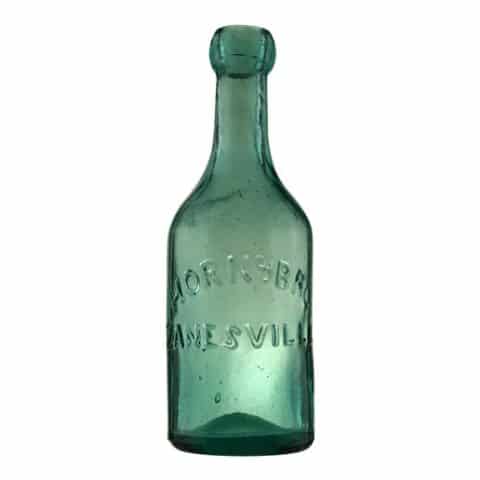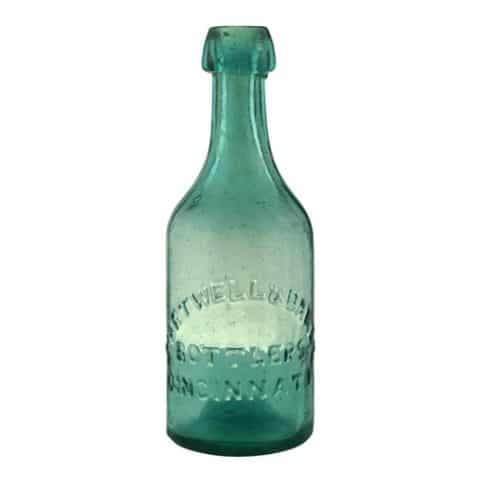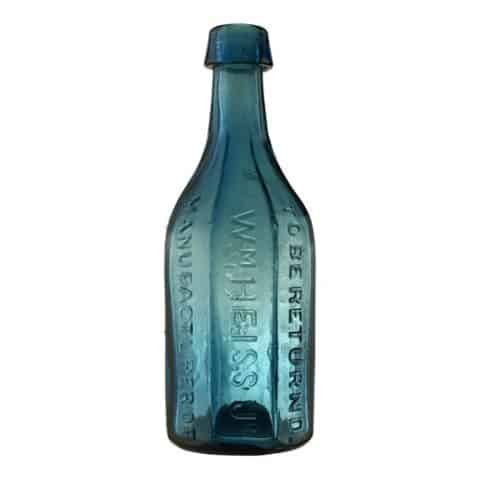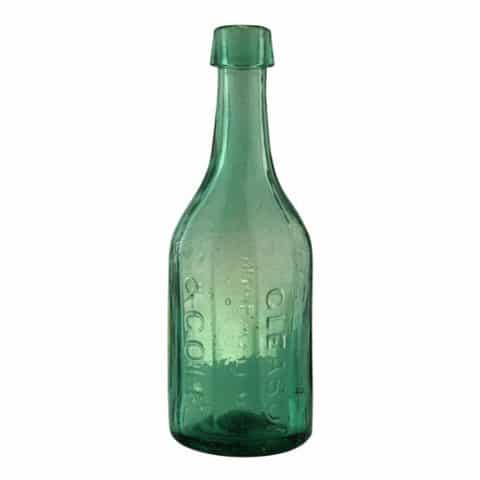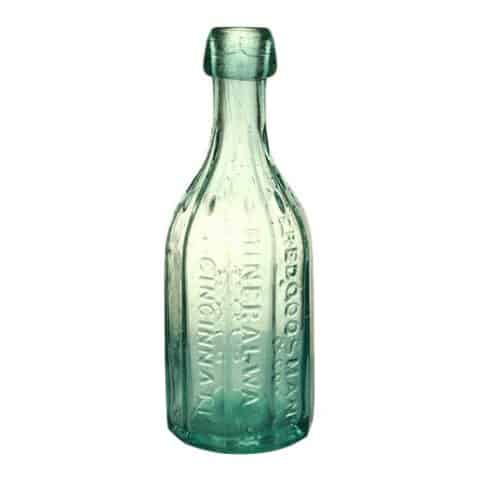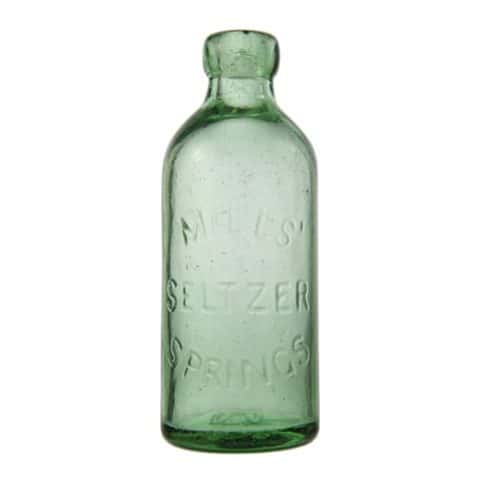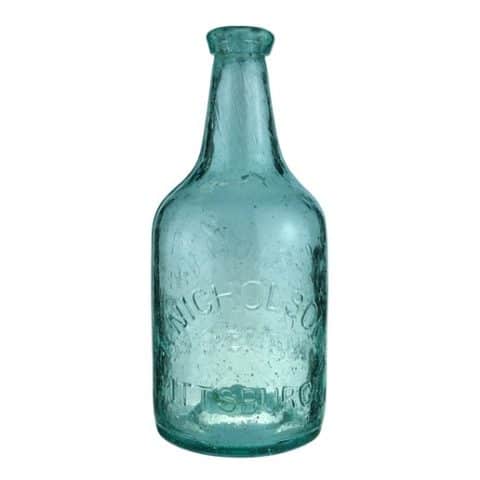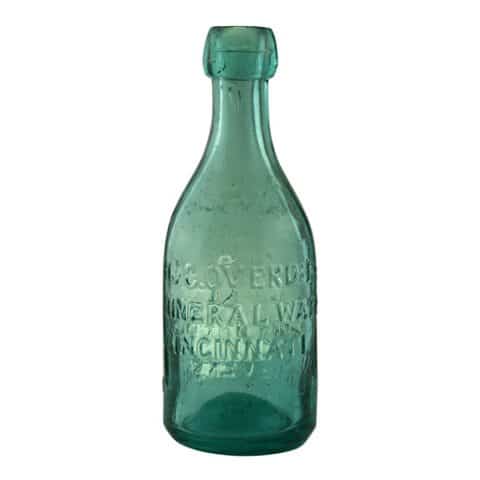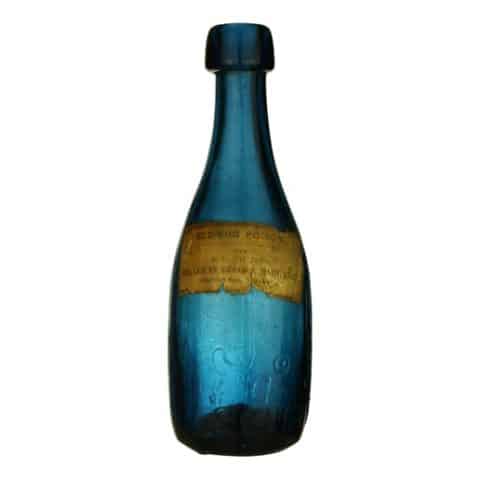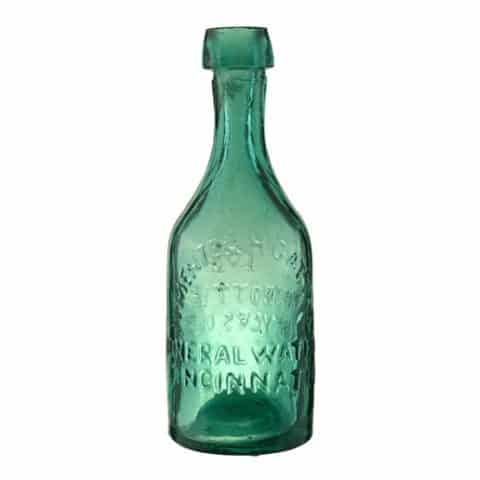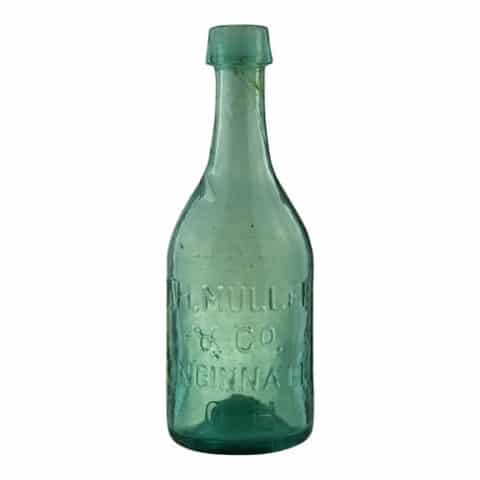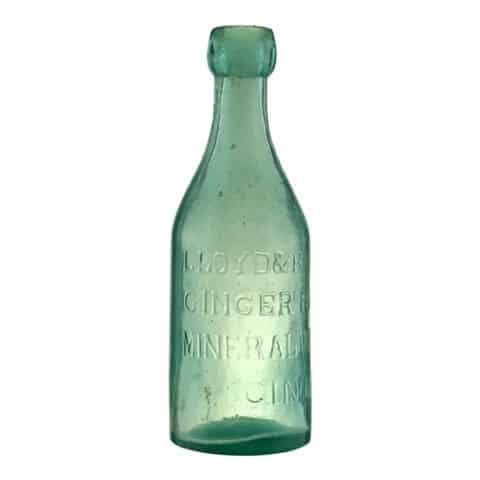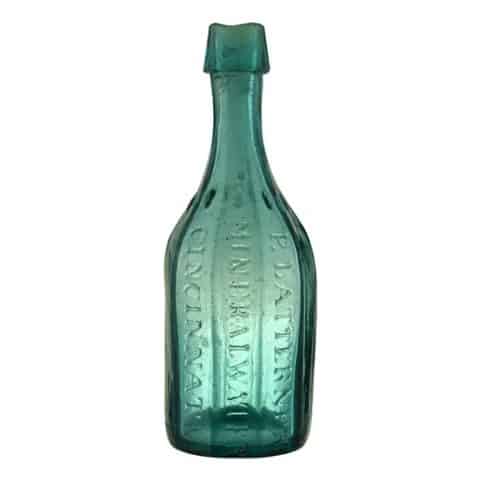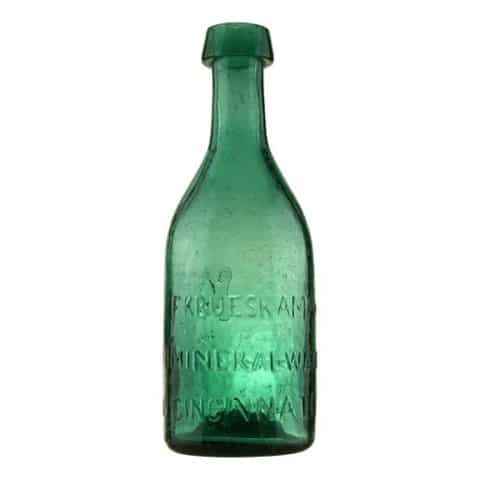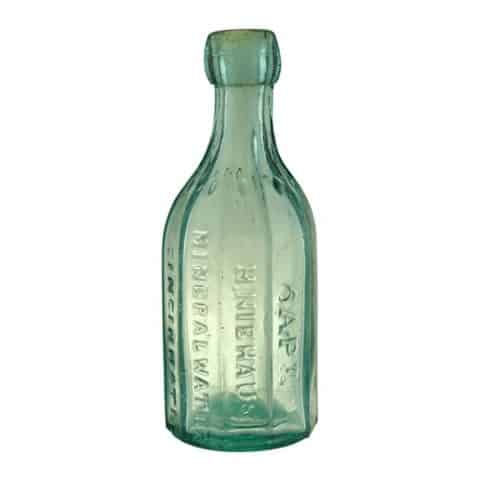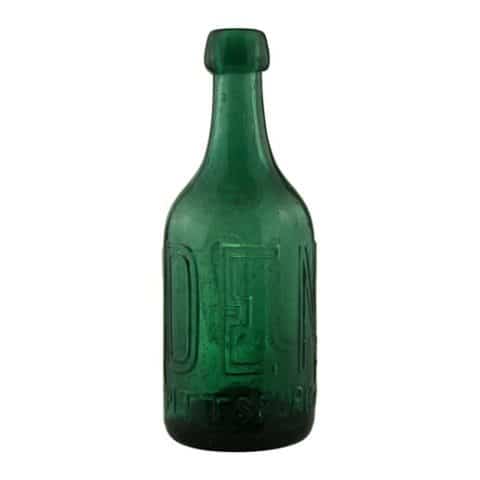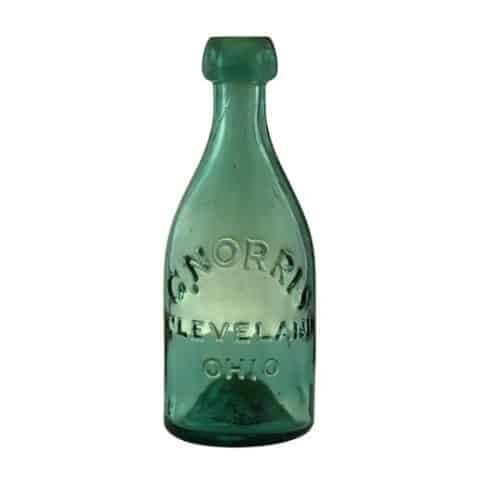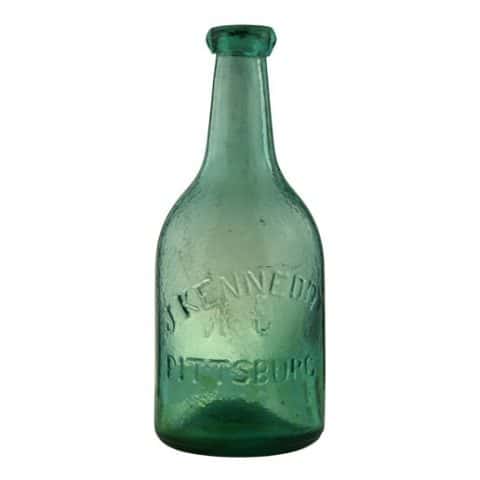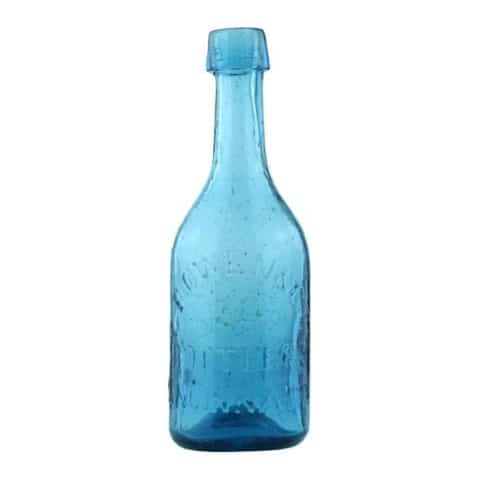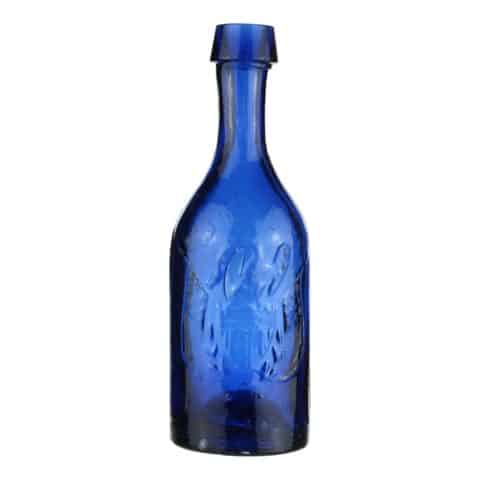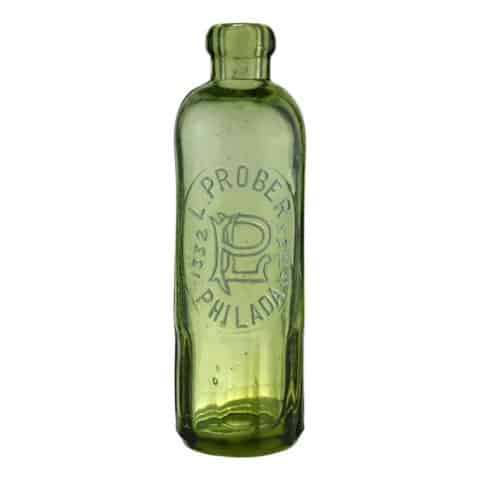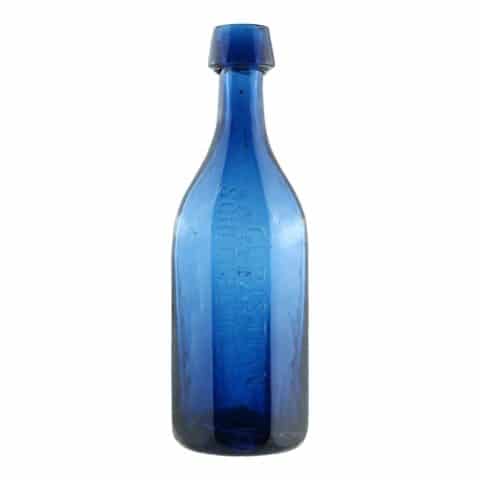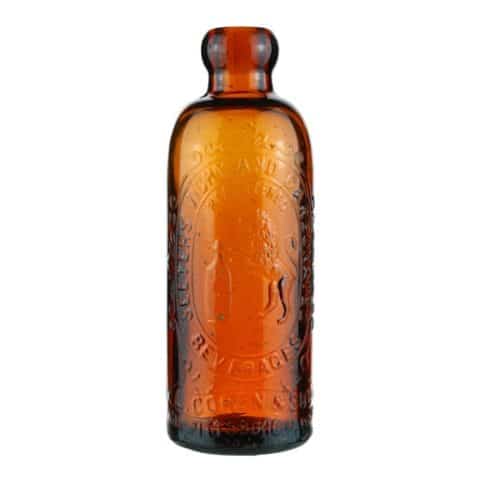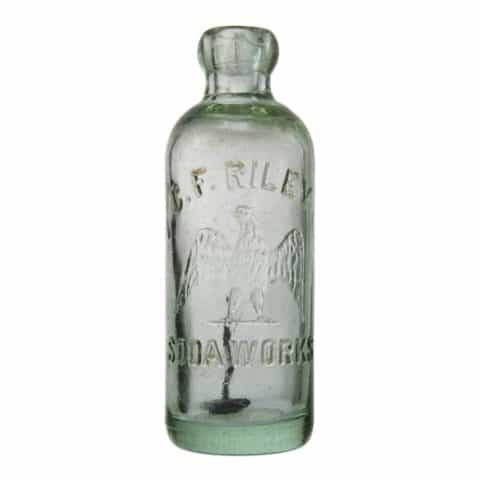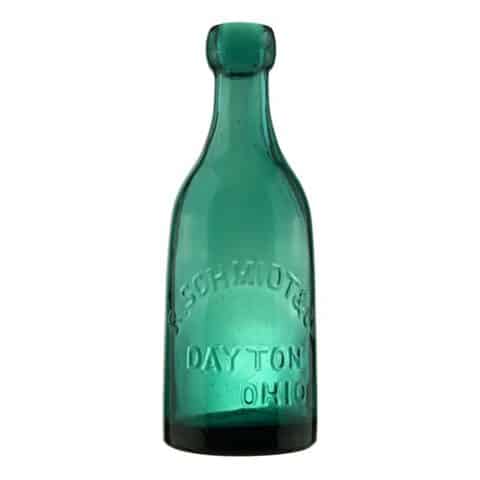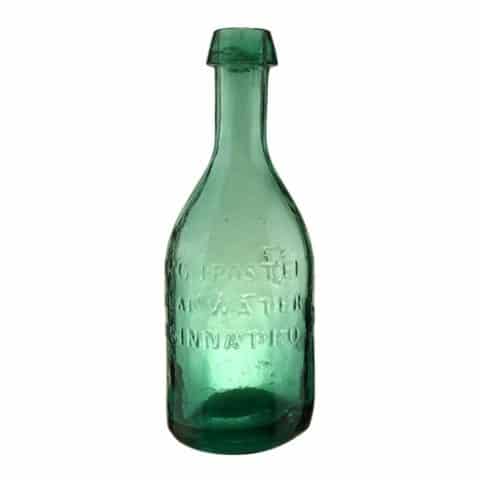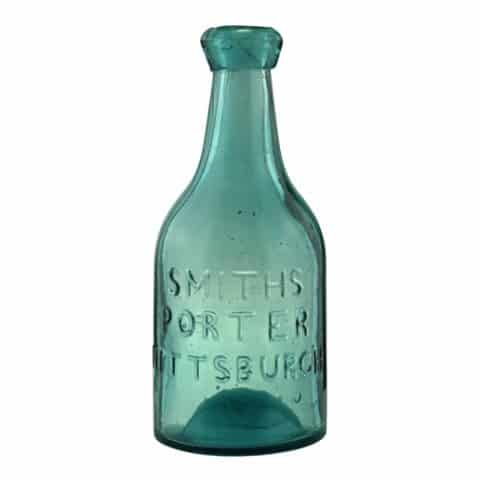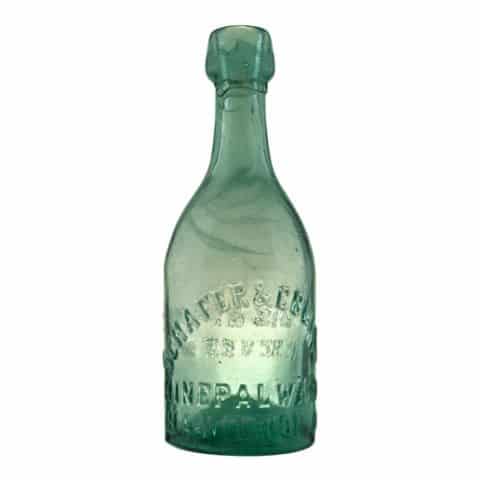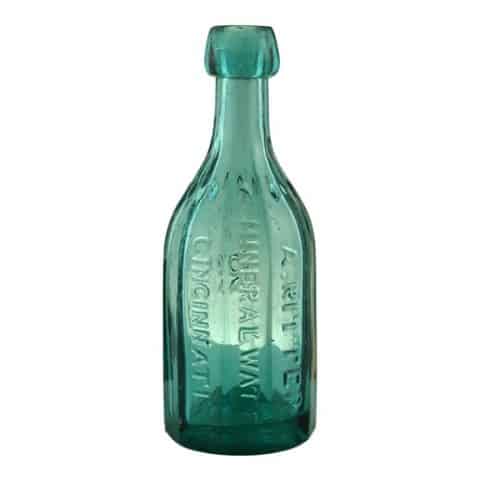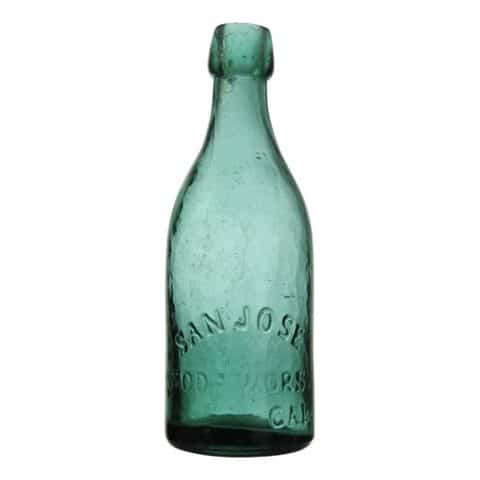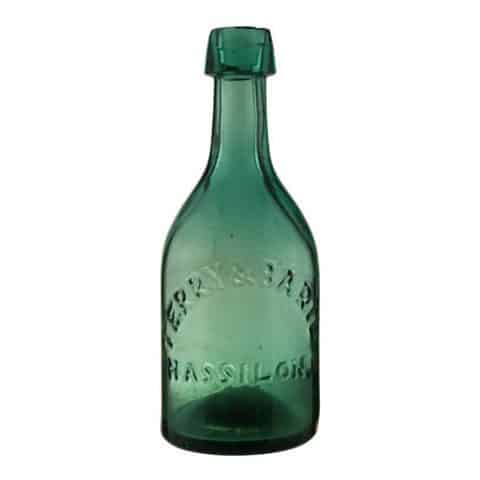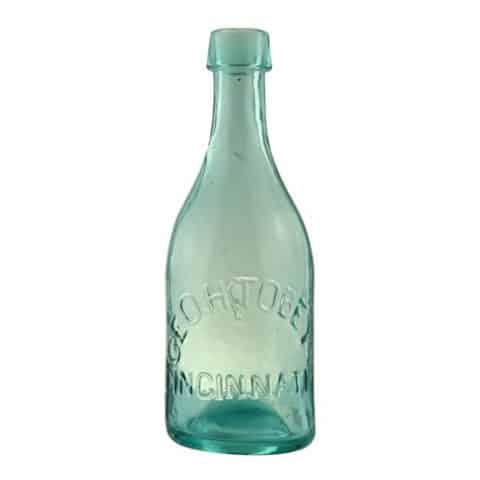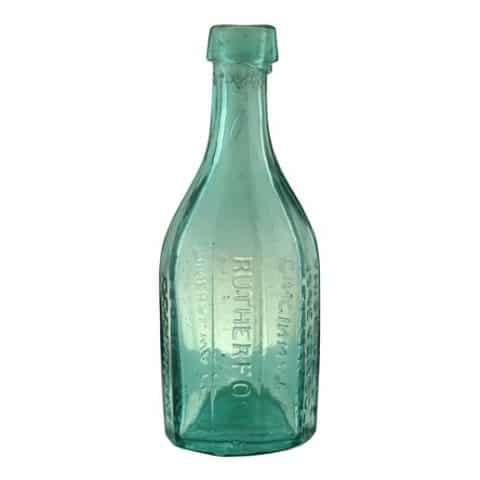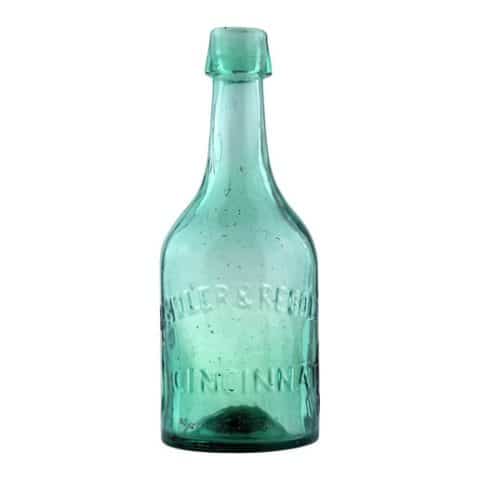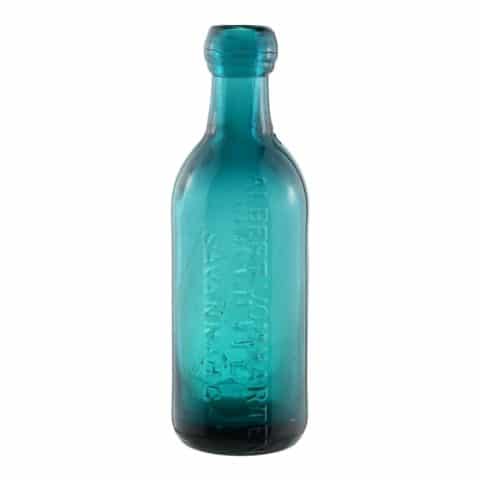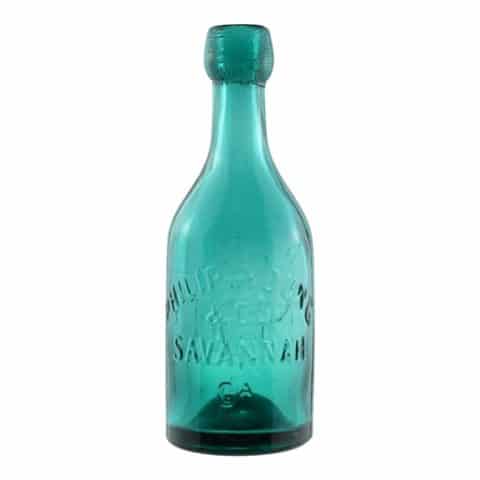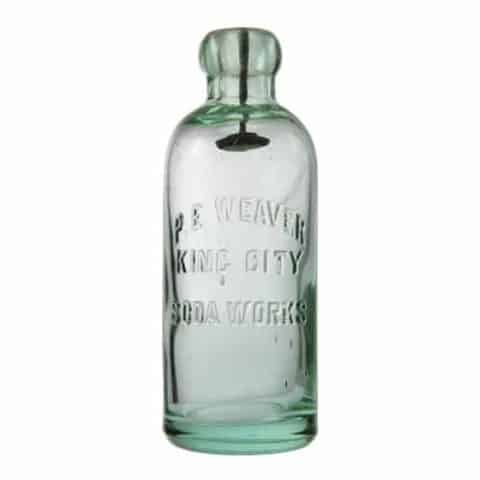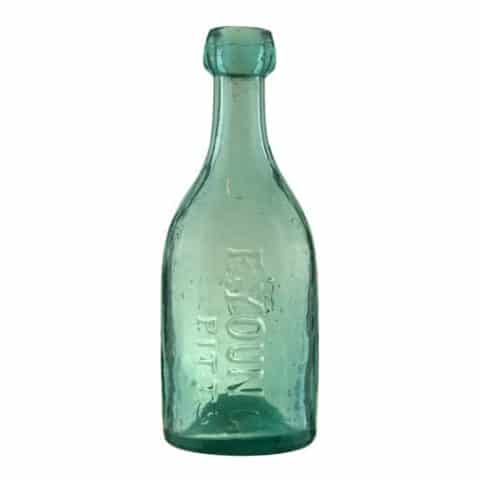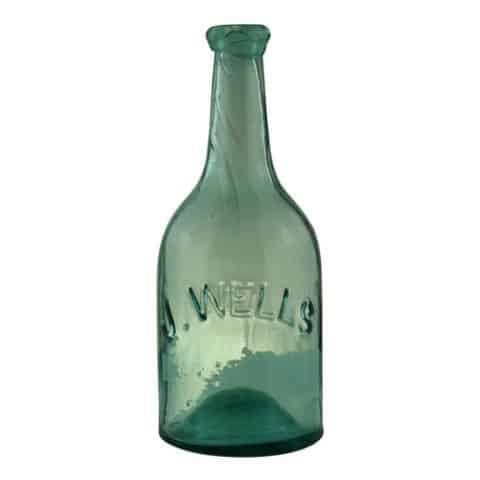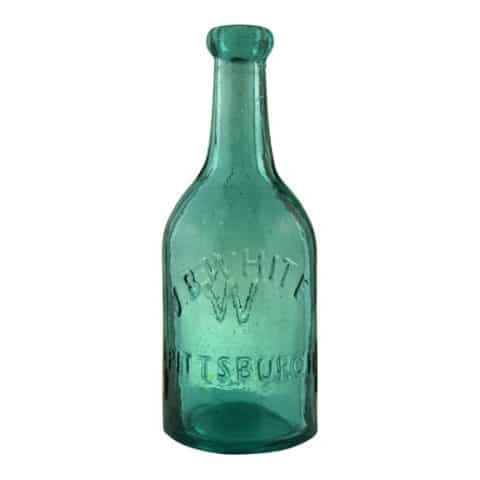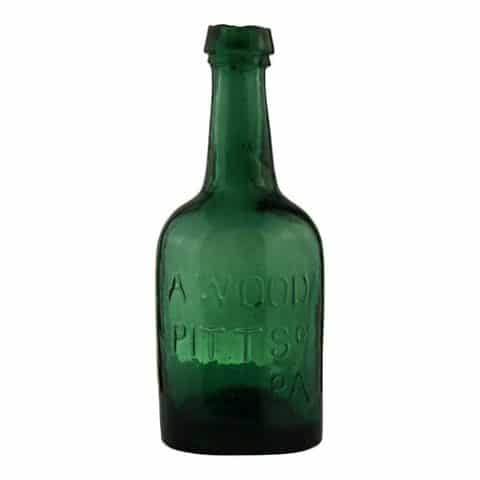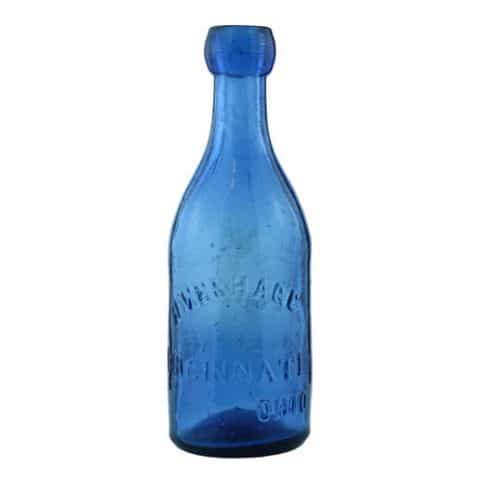Mills’ Seltzer Springs
Mills’ Seltzer Springs
M
Luther R. Mills, San Francisco, California
Santa Clara County, Saratoga, California
Light Blue Green Hutchinson Bottle
Provenance: Lou Pellegrini Collection

Our museum example represents a very rare and heavy, blue-green Hutchinson bottle embossed ‘MILLS” SELTZER SPRINGS’ in three lines on the face of the bottle. “Mills'” and “Springs” are arched convex and concave above and below a straight line “Seltzer.” The copy is a bold sans serif type. There is an embossed ‘M’ on the base and an applied blob-top mouth. The bottle is a little under 6 ½ inches tall by 2 ½ inches wide.
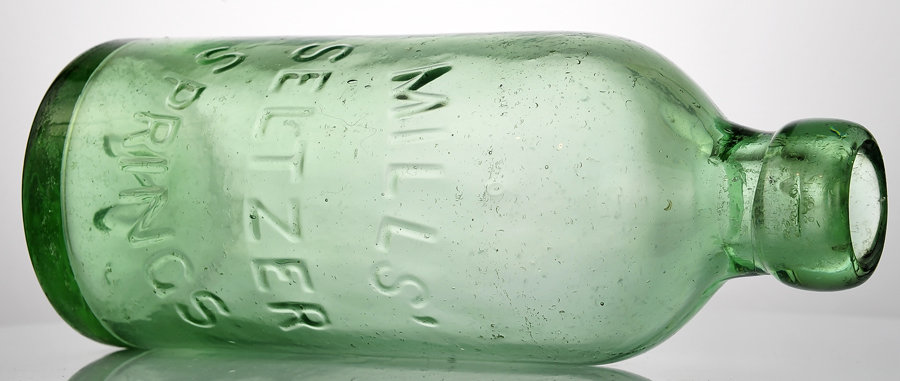
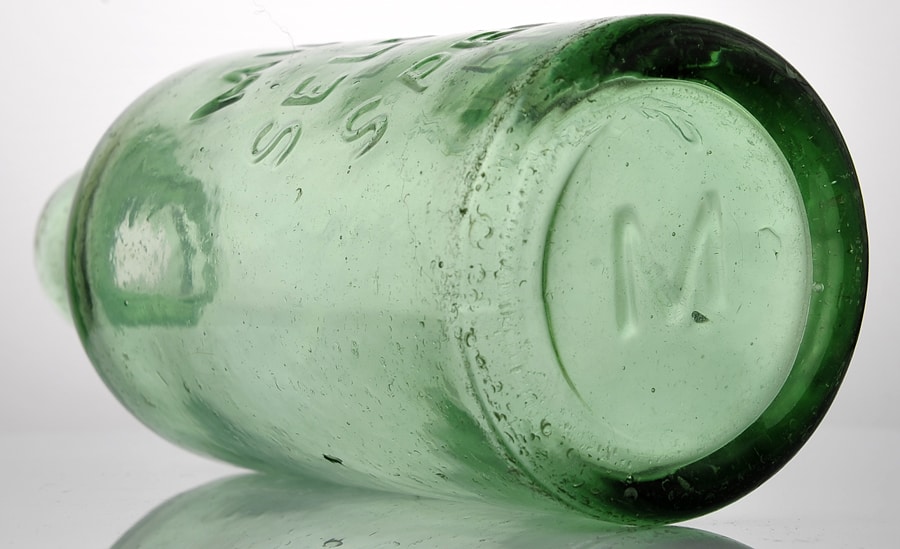
Mills’ Seltzer Springs, later named Azule Springs, was located in Santa Clara County at a ravine on Mt. Eden Road in the Saratoga foothills about twelve miles west of San Jose, California. This was not far from the Pacific Congress Springs.
See the museum examples of Pacific Congress Water Springs Saratoga (Running Deer) bottles.
In the early days, the springs were referred to as “blue springs” and later Azule Springs, as the name was derived from the Spanish word azule, meaning blue. The mountains where the springs were located had a blueish tint when viewed from a distance. The springs were also called Caldwell Springs, named after Arthur Caldwell, who accidentally discovered the spring running from a sandstone crevice on his sixteen-acre ranch in the 1870s.
Caldwell later sold the ranch to Luther R. Mills, a San Francisco grocery and liquor wholesaler who formed Mills Pacific Seltzer Spring Company. Mills initially sold the water under the trade name “Mills’ Seltzer Springs.” He later marketed it as “Azule Seltzer Springs.” It is quite possible that Luther Mills is the “Mills” on Mills’ Bitters.
See the museum example of Mills’ Bitters in the Bitters Gallery.
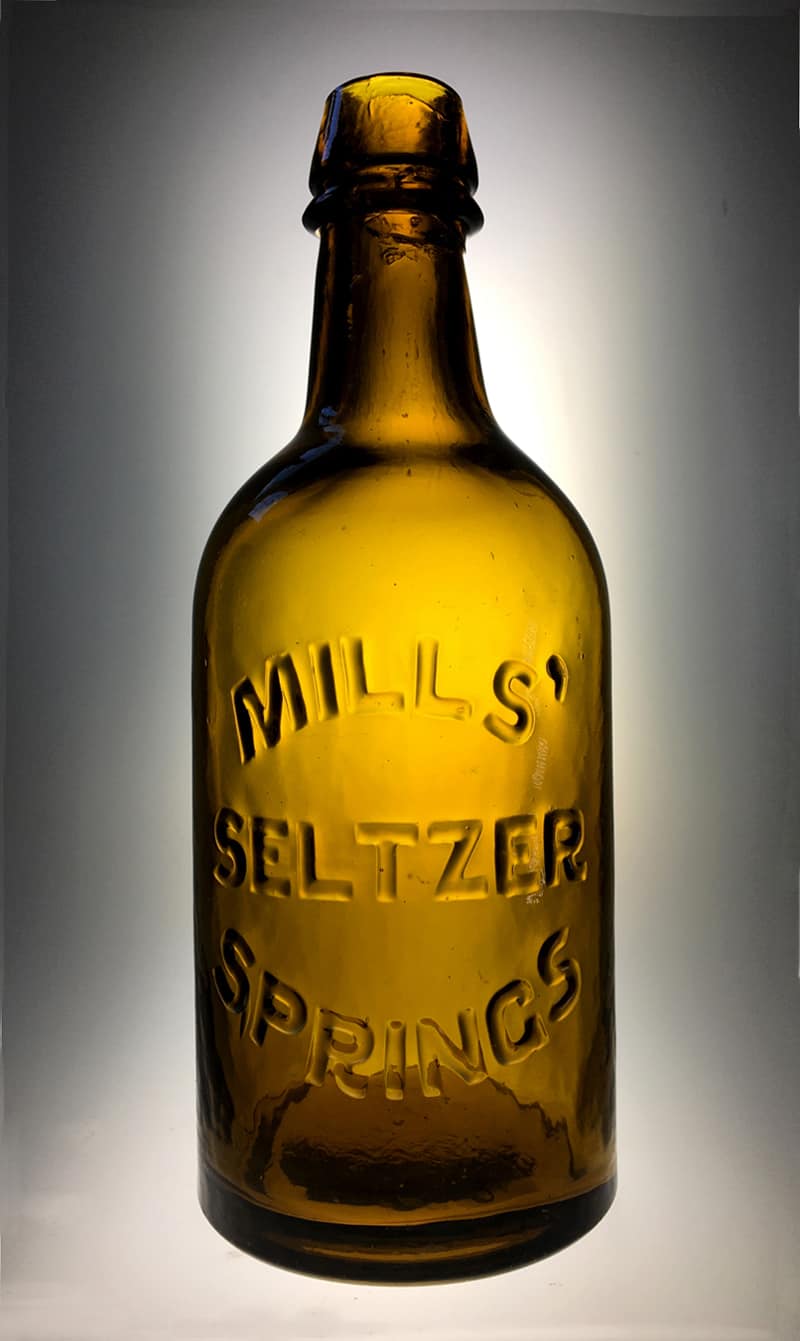
Reportedly, the mineral water flowed pure and sparkling from a subterranean chemical laboratory at an elevation of one thousand feet above sea level. The water was carbonated, pungent, and described as very similar to the famous seltzer of Nassau in Germany.
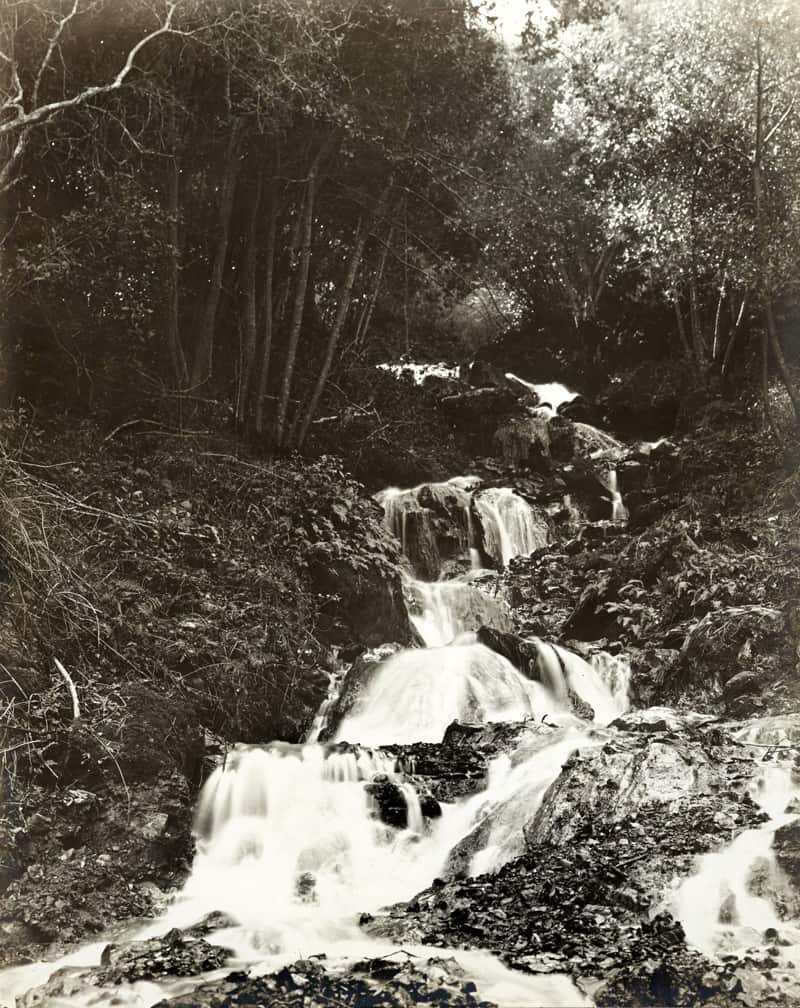
Patent medicine in the second half of the 1800s was typically advertised to cure almost anything. The Seltzer Springs Co. followed this regimen and reported that their seltzer was an antacid, aperient, diuretic, and tonic. It was marketed as having “great value in curing dyspepsia, torpidity of the liver, and the intestinal tract, increasing the process of secretion and excretion, and eliminating the morbific waste materials in the visceral and cutaneous systems. It is highly useful in habitual constipation, alcoholic dyspepsia, Bright’s disease, uric and lithic acids in the urine, etc.”
Luther Mills came to California from New York in 1849 via the Isthmus. and worked in the liquor trade in San Francisco for many years. As an aside, Luther’s brother, William J. Mills, was also in the liquor business in Buffalo, New York. In the latter part of the 1860s, Luther Mills came to the Saratoga valley and founded the Congress Springs Hotel, where he was the proprietor for a number of years. In the 1870s, he sold the hotel and, moving a few miles up the canyon, established another resort, which he called Mills Springs. His first Mills’ Seltzer Springs bottles were probably ordered at this time, if not sooner.
The product was bottled and shipped in large quantities to all parts of California and supplied to grocers and drug stores in the San Jose area by the distribution firm Wood and Pfister and later Schemmel & Pfister in 1892 when they were the owner and proprietors of Azule Seltzer Water Co. of San Jose. Mills remained at the springs until he sold the property in 1883 to J. W. Ryland. He died in San Jose in 1888. At various times until his death, Mills was a director at the First National Bank of San Jose and a member of the Society of Pioneers of California.
The Mills family never had to worry much about money. For instance, when Luther Mills came to San Francisco, he was one of about half a dozen men who bought their own ship to sail to California. Another brother, John G. Mills, was extremely wealthy, likely rivaling his cousin, banker Darius Ogden Mills. Darius’ brother (Luther’s cousin), Niles Mills, produced the Fish’s Infallible Hair Restorative bottle. In the end, Luther Mills was credited with making and losing several fortunes in his lifetime. When John G. Mills died, he bequeathed one-fifth of his huge estate each to Luther and William—in 1884.
The bottling and advertising of Azule Seltzer Springs water terminated on July 28, 1899, when the Azule Seltzer Water Company of San Jose was declared insolvent.
Santa Clara County Assessor Lewis Amiss Spitzer acquired the springs in the early years of the twentieth century and organized retreats for weekend visitors at his palatial home on the property. Aside from these weekend getaways at the Spitzer residence, Azule Seltzer Springs never achieved the level of popularity and acclaim as the nearby Saratoga Pacific Congress Springs.
Primary Image: The Mills’ Seltzer Springs bottle imaged by Gina Pellegrini at the FOHBC Virtual Museum west coast studio.
Support: Reference to 19th Century San Jose in a Bottle by Tobin Gilman. Image of obverse and reverse aquamarine Azule Seltzer Spring bottle courtesy same. Image of obverse aquamarine Mills’ Seltzer Spring bottle courtesy same.
Support Image: “Falls” at Azule Natural Seltzer Springs in Saratoga, circa 1900 – University of Southern California Historical Society Collection, 1860-1960 (collection), Pierce Photography Collection.
Support Image: Saratoga-type Mills’ Seltzer Springs bottle in golden amber glass and Fish’s Infallible Hair Restorative bottle – Eric McGuire collection. Eric also provided research on Luther Mills and the Mills family.
Join the FOHBC: The Virtual Museum is a project of the Federation of Historical Bottle Collectors (FOHBC). To become a member.

